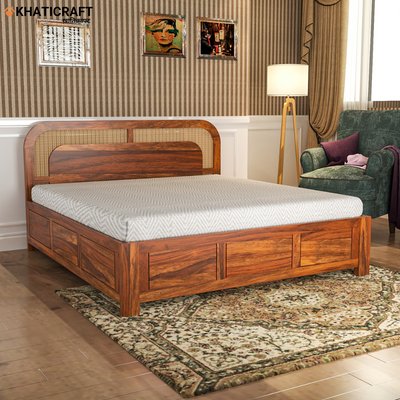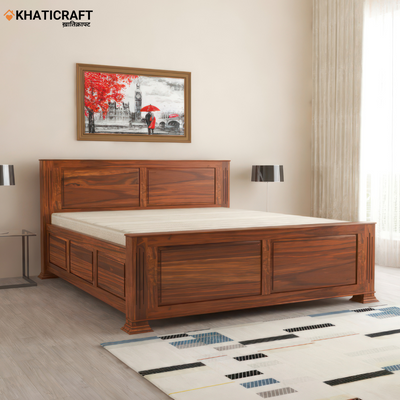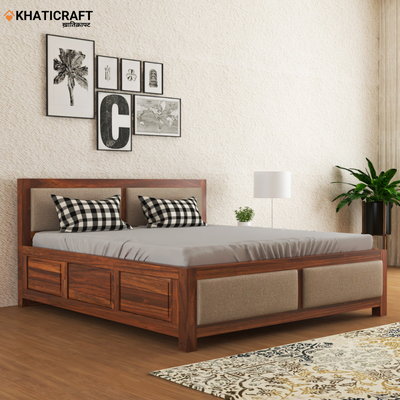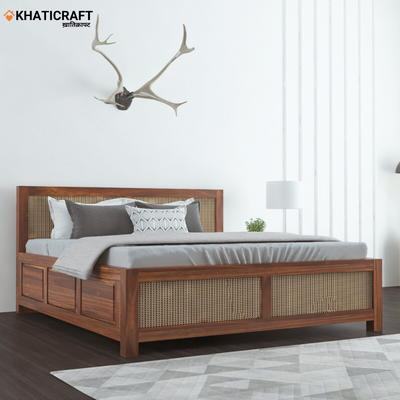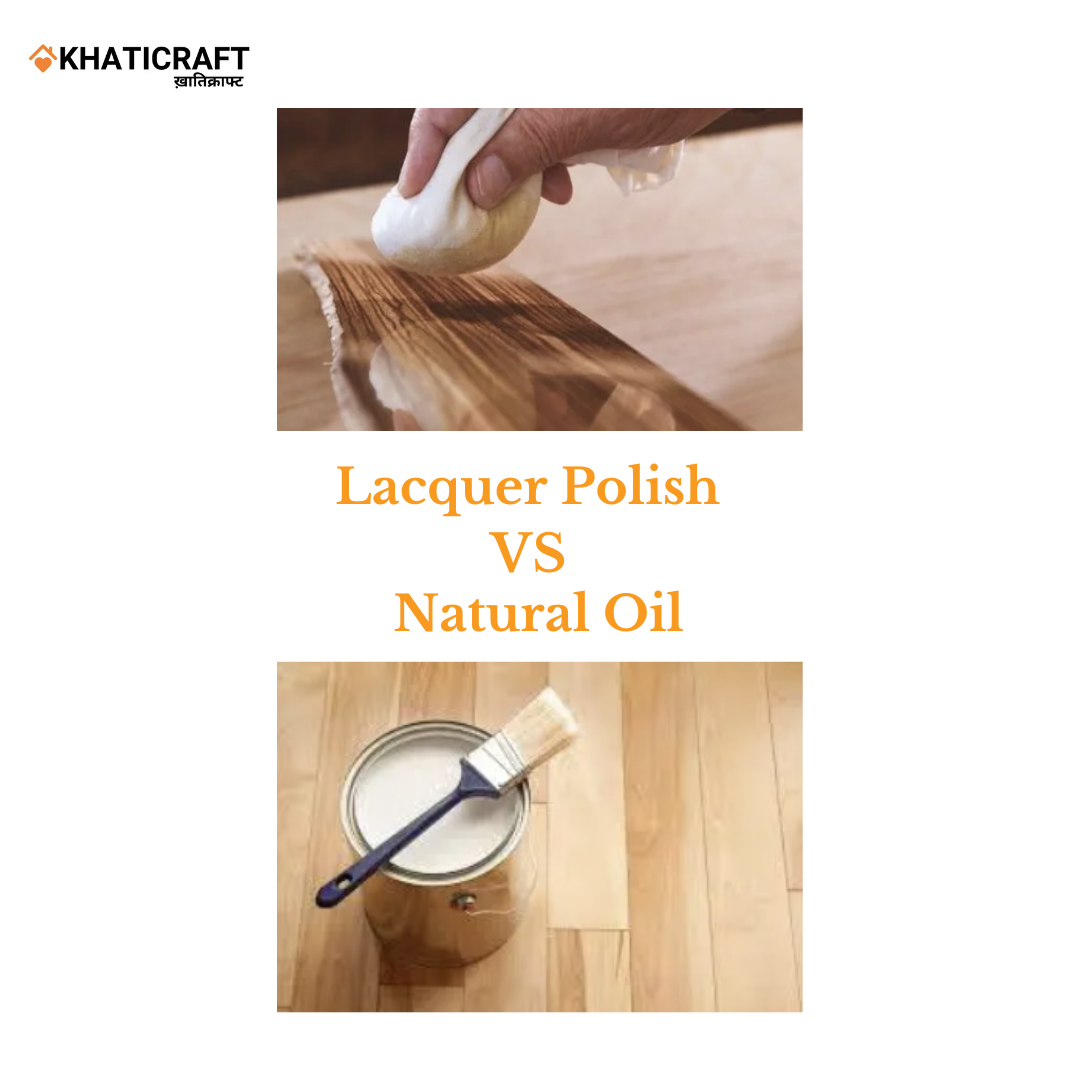Comparison Between Lacquer and Natural Oil: All You Need To Know
Both, Lacquer and natural oil are two distinct finishes mostly used in the world of furniture, each offering unique attributes that cater to different needs and preferences. The customers, while choosing between these finishes, must consider factors like appearance, durability, application, maintenance, environmental impact, and overall style.
To help make the selection based on aesthetics, indoor or outdoor use, and desired maintenance to achieve the perfect finish, we have mentioned the key features of Lacquer and natural oil finishes in this blog.
|
Aspect |
Lacquer Finish |
Natural Oil Finish |
|
Appearance |
Glossy, reflective |
Matte, natural |
|
Enhances Grain |
Yes |
Yes |
|
Drying Time |
Quick |
Slower |
|
Durability |
Good protection, but prone to wear |
Moderate protection, needs upkeep |
|
Chemical Resistance |
Resistant |
Sensitive to chemicals |
|
Maintenance |
Minimal |
Regular reapplication required |
|
Environmental Impact |
High VOCs in traditional lacquers |
Environmentally friendly |
|
Application |
Often sprayed on for even coverage |
Applied by hand, may require multiple coats |
|
Repairability |
Challenging for touch-ups |
Easy, can be re-oiled |
|
Moisture Regulation |
Limited |
Regulates moisture, prevents cracking |
|
Aesthetics |
Modern, elegant |
Rustic, warm |
Lacquered Hardwood Floors
Lacquered finished hardwood floors are a combination of acrylic or polyurethane chemicals that are formulated in a different way from that of normal wood varnish to accommodate traffic. The older generation people often refer Lacquer to ‘Varnished’ that has been used since ages and is used today as well.
The overall appearance of a lacquered hardwood floor is cleaner and smoother and is commonly applied on pre-manufactured hardwood floors. Lacquered Hardwood Floors come with easy maintenance using branded cleaning/maintenance products and can be cleaned with brush broom or vacuum cleaner.

Advantages
Enhanced Appearance: Lacquer finishing is known for its ability to create a smooth, glossy surface that enhances the natural beauty of the material. The finish can be clear or tinted, giving you options for different looks.
Quick Drying: Lacquer finishes generally dry quickly compared to other kinds of finishes like oil-based varnishes. This is due to the solvent-based nature of lacquers, which evaporates rapidly.
Build Layers: Lacquer finishes can be built up in multiple thin layers to achieve a deeper shine and better protection. This layering process allows for a high-gloss finish that's difficult to achieve with other types of finishes.
Repairability: If a lacquer finish becomes damaged or develops imperfections over time, it can often be easily repaired by reapplying another layer of lacquer. This makes it a practical choice for surfaces that may see wear and tear.

Resistance to Water and Chemicals: Lacquer finishes can provide good resistance to water, mild chemicals, and even some level of UV radiation. This makes them suitable for surfaces that might be exposed to these elements.
Natural Oiled Hardwood Floors
Oil is the modern day similar to the old-fashioned wax option, offering both surface protection as well as deep penetrating protection. Although oiled wood floors come with higher maintenance on an ongoing basis as compared to lacquered wood floors, it tends to need fewer major interventions because the protection goes deeper than simply the surface.

Unlike the lacquered finish, when the top layer of oil finish gets worn away, you still have the underneath protection. Of course, when oil furnishing is protected it with good doormats, and sweep or vacuum it regularly and give it a light mopping, it’ll stays as it is for a longer duration.
Advantages
Enhanced Wood Grain: One of the most significant advantages of an oiled finish is that it brings out the natural beauty and character of the wood grain. The oil penetrates the wood, emphasizing its unique patterns and textures.
Matte Appearance: Unlike lacquer finishes, which tend to be glossy, an oiled finish offers a matte appearance. This can create a more natural and subdued look that's especially desirable for rustic or traditional aesthetics.
Easy Touch-Up and Repair: If an oiled surface gets scratched or damaged, it's often easier to repair than surfaces with more rigid finishes. You can simply apply more oil to the affected area and blend it in.
Moisture Regulation: Natural oil finishes have the ability to regulate moisture within the wood. They allow the wood to breathe and can help prevent excessive expansion and contraction due to changes in humidity.
Non-Toxic and Environmentally Friendly: Many natural oils used for finishing, such as linseed oil and tung oil, are non-toxic and environmentally friendly. They don't release harmful VOCs into the air, making them a healthier choice for indoor environments.
Detailed Comparison Between Lacquer and Natural Oil
Appearance
Lacquer finishes are popular for their high-gloss and reflective surfaces, which can elevate the visual appeal of furniture. The glossy sheen provided by lacquer enhances the depth of wood's natural color, making it appear vibrant and luxurious.
While, natural oil finishes tend to provide a more subdued, matte appearance that preserves the wood's inherent texture and grain. Using this kind of polishing can give your furniture a warm and organic look, showcasing the beauty of the wood without the flashy gloss of lacquer.
Durability
Regarding durability, lacquer finishes often take the lead. They create a robust protective layer that guards against scratches, spills, and heat. This protection is particularly beneficial for furniture that will face heavy use or potential exposure to liquids.
In contrast, natural oil finishes offer a more breathable and flexible layer making it less impervious to wear and tear compared to lacquer. However, natural oil finishes are more forgiving when it comes to repairs, as scratches can often be sanded out and re-oiled without needing a complete refinish.
Application
Lacquer application is a meticulous process that typically involves multiple coats. It demands a controlled environment to prevent dust and debris from adhering to the wet finish. Sanding between coats is often necessary to achieve a smooth and flawless surface. Conversely, natural oil finishes are easier to apply and are often done by hand. These finishes penetrate the wood, accentuating its natural beauty without forming a thick film. The simplicity of applying natural oil makes it an attractive option for DIY enthusiasts or those looking to avoid complex finishing procedures.
Maintenance and Repair
When it comes to maintenance and repair, natural oil finishes have a clear advantage. While lacquer finishes are more resistant to damage initially, they can be difficult to repair. Scratches or blemishes in lacquered surfaces often require extensive work, including stripping and refinishing the entire piece. Natural oil finishes, however, can be repaired with relative ease. Minor scratches can often be buffed out and re-oiled locally, blending seamlessly with the surrounding finish.
Environmental Considerations
The environmental impact is an increasingly important factor in choosing finishes. Traditional solvent-based lacquers can release volatile organic compounds (VOCs) into the air, contributing to indoor air pollution. Water-based lacquers are a more environmentally friendly alternative but might still contain some level of VOCs.
On the other hand, natural oil finishes are generally more eco-friendly. Derived from plant-based sources, these finishes emit fewer VOCs, making them a popular choice for those concerned about indoor air quality and sustainability.
Feel and Texture
Lacquer finishes offer a smooth and almost glass-like texture due to the hard layer they form on the wood's surface. This can provide a modern and refined feel. In contrast, natural oil finishes maintain the wood's natural texture and grain, resulting in a warmer and more tactile experience. The choice between these two textures is often a matter of personal preference and the desired tactile interaction with the furniture.
Aesthetics and Style
Lacquer finishes are often associated with modern or formal aesthetics. The glossy and sophisticated look of lacquer complements contemporary design and can be a statement piece in minimalist interiors. Natural oil finishes, on the other hand, align well with styles that prioritize a rustic, handcrafted, or organic feel. They celebrate the natural beauty of the wood and are often favored in traditional or transitional settings.
Conclusion
In conclusion, the final decision to use lacquer or natural oil as a furniture finish boils down to a combination of factors including the desired appearance, the anticipated level of wear and tear, the ease of application and repair, environmental considerations, and the overall style of the furniture and the space it will occupy. Lacquer offers durability and a glossy aesthetic, while natural oil provides a more natural look, easier repair options, and a greener footprint. By carefully evaluating these factors, you can select the finish that best suits your specific needs and preferences.
If you’re struggling to decide between oiled and lacquered finish wood flooring, get in touch with us to get more details about the option that will work best for your project.
FAQ
What is the main difference between lacquer and natural oil finishes?
Lacquer finishing creates a glossy and durable surface on furniture, while natural oil finishes provide a matte appearance that enhances wood's texture and grain.
Which kind of finishing offers enhanced durability?
Lacquer finishes are generally more durable and resistant to scratches, spills, and heat, making them suitable for high-traffic areas. Natural oil finishes are less durable but offer easier repair options.
How each of these finishes is applied?
Lacquer application involves multiple coats in a controlled environment, with sanding between coats for a smooth finish. On the other hand, Natural oil is applied by hand, allowing it to penetrate the wood and enhance its natural beauty.
How do these finishes differ in terms of maintenance and repair?
Lacquer finishes are harder to repair, often requiring extensive work such as stripping and refinishing. Natural oil finishes are easier to repair, with minor scratches often buffed out and re-oiled locally.
Are there any environmental concerns associated with these finishes?
Lacquer finishes, particularly solvent-based ones, can emit volatile organic compounds (VOCs) into the air. Natural oil finishes are generally more environmentally friendly due to their plant-based composition and lower VOC emissions.
Which finish is more appropriate for a modern look of the home?
Lacquer finishes with their high-gloss appearance are often associated with modern and formal aesthetics, making them a preferred choice for sleek and contemporary designs.
Do these finishes feel different to the touch?
Lacquer finishes provide a smoother and more glass-like texture, while natural oil finishes maintain the wood's natural texture and grain, offering a warmer and more tactile feel.
Can you briefly explain the style preferences for each finish?
Lacquer finishes are favored in modern, minimalist, or formal settings, whereas natural oil finishes are often chosen for styles that embrace a rustic, handcrafted, or organic look.
Which finish is more forgiving for DIY enthusiasts?
Natural oil finishes are generally more forgiving and easier for DIY applications due to their simpler application process and easier repairability.
How does the cost of these finishes compare?
Lacquer finishes can be more expensive due to the labor-intensive application process and the need for controlled environments. Natural oil finishes are generally more cost-effective.
